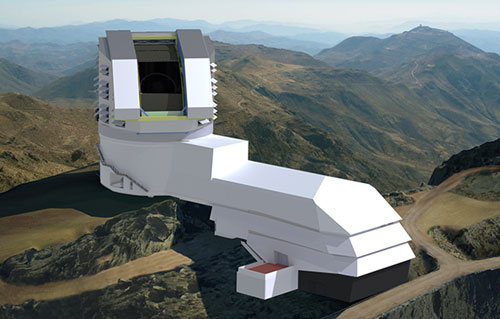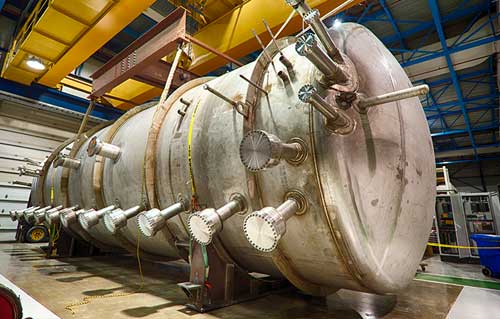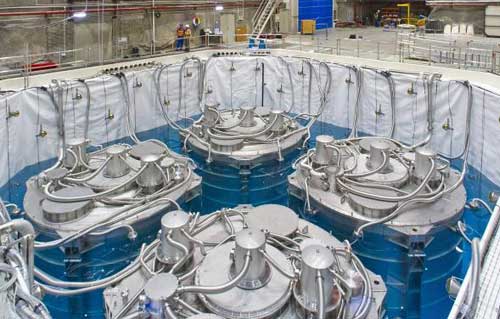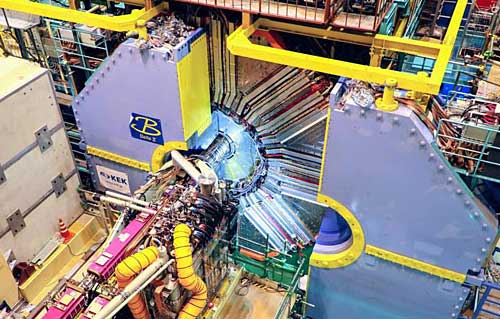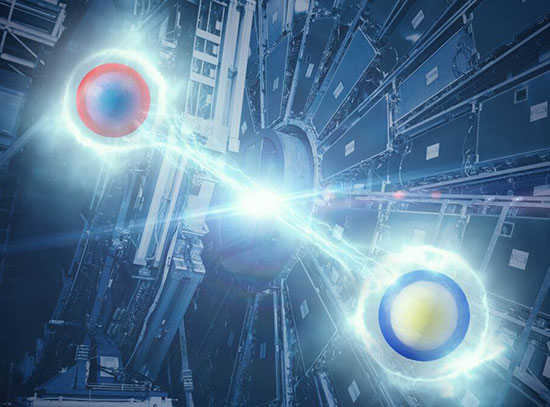
High Energy Physics
Exploring the fabric of space and time
Brookhaven Lab collaborates on leading experiments around the world that seek to answer the most pressing questions about the universe, such as the origin of mass, the behavior of ghost-like particles called neutrinos, and the nature of dark matter and dark energy. Many of these experiments investigate the Standard Model—the theory that describes the relationship between the fundamental forces of nature and elementary particles—and search for new physics that may lay beyond it. Brookhaven is also building advanced detectors for next-generation high energy physics experiments.
The ATLAS Experiment is one of four major experiments at CERN’s Large Hadron Collider that study the building blocks of matter. Brookhaven Lab serves as the U.S. host laboratory for ATLAS and plays many roles in this international collaboration, from data storage and distribution to project management and experiment operations.
The Rubin Observatory, currently under construction on a mountaintop in Chile, will house a telescope to produce the deepest, widest image of the universe and enable unprecedented studies on dark matter and dark energy. Brookhaven Lab constructed the telescope's 3.2 gigapixel “digital film”—the biggest CCD array that has ever been built—and will support the telescope’s operations.
Brookhaven Lab will play a leading role in the design, construction, and operations of DUNE, an upcoming experiment where physicists will send neutrinos across 1,300 kilometers underground in search of new subatomic phenomena.
A 170-ton liquid-argon time projection chamber, MicroBooNE has been collecting data on neutrinos since 2015 and is now providing scientists with crucial input for even larger-scale neutrino experiments, such as DUNE. Brookhaven contributed to the design of MicroBooNE and continues to support data analysis.
Scientists at Brookhaven Lab perfected the “recipe” for the chemically stable liquid scintillator that fills particle detectors and interacts with antineutrinos at China’s Daya Bay Neutrino Experiment, where scientists study these mysterious particles that may answer questions about the birth of our universe. Brookhaven also has ongoing roles in this international collaboration that range from project management to data analysis.
Half a world away from the Belle II Experiment at Japan’s SuperKEKB particle accelerator, where physicists track particle smashups to answer the biggest questions in physics, Brookhaven Lab handles up to 95 percent of the experiment’s computing workload, in addition to serving as the lead laboratory for its U.S. collaborators.





